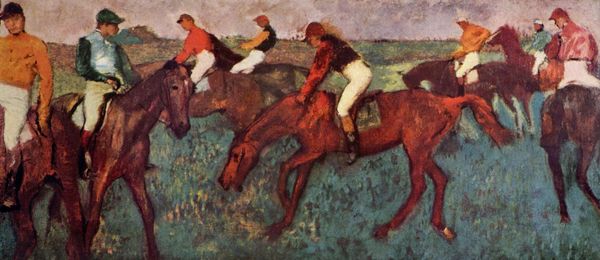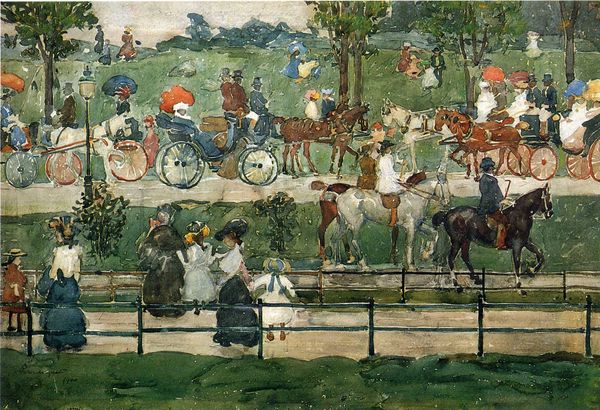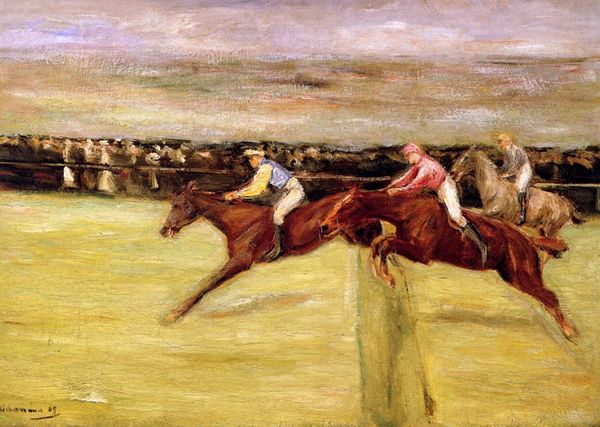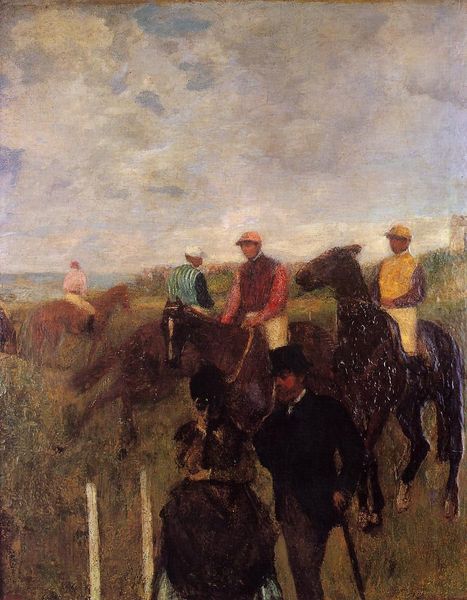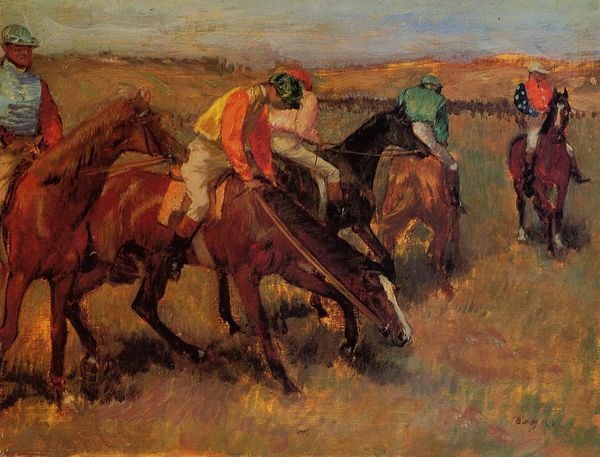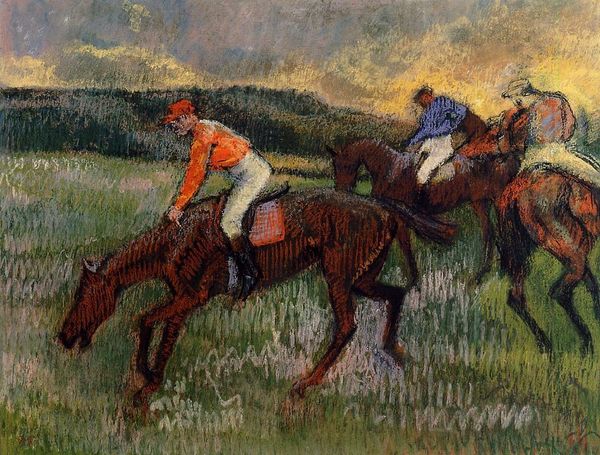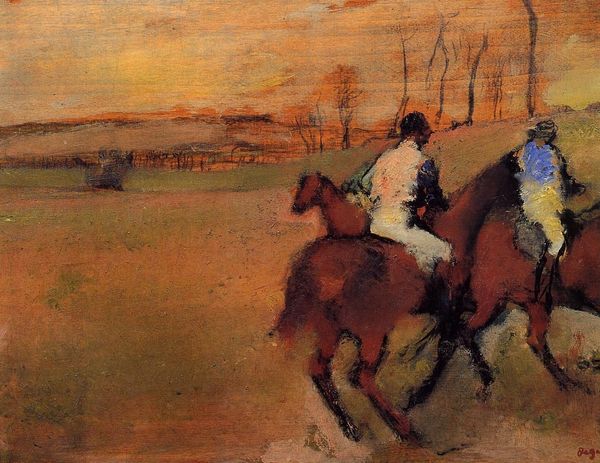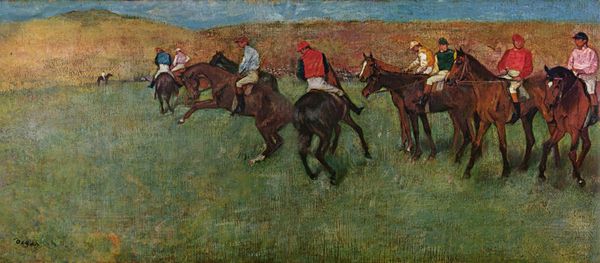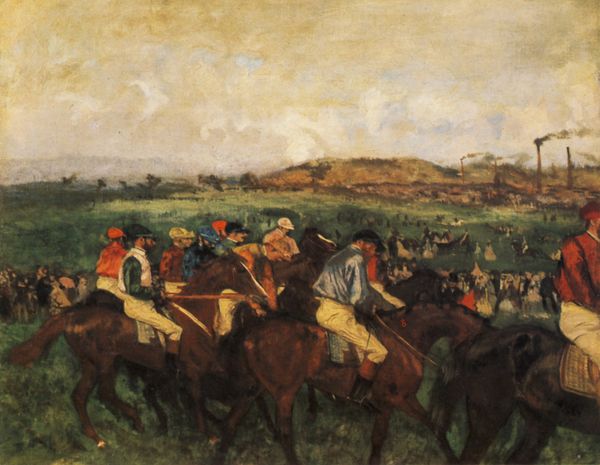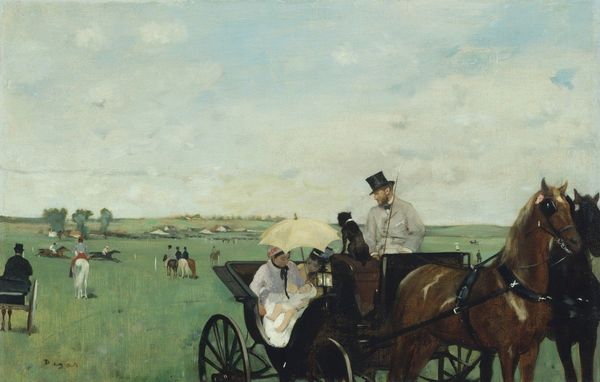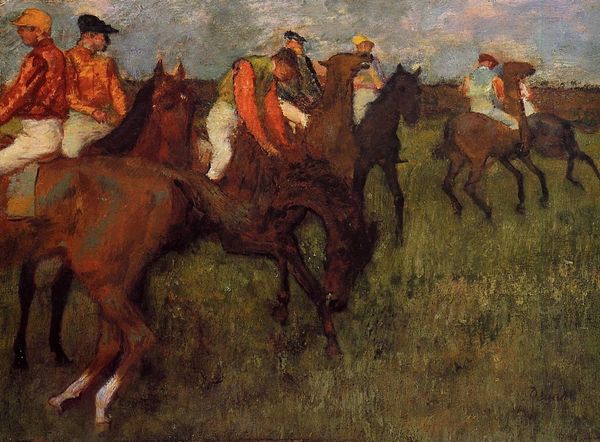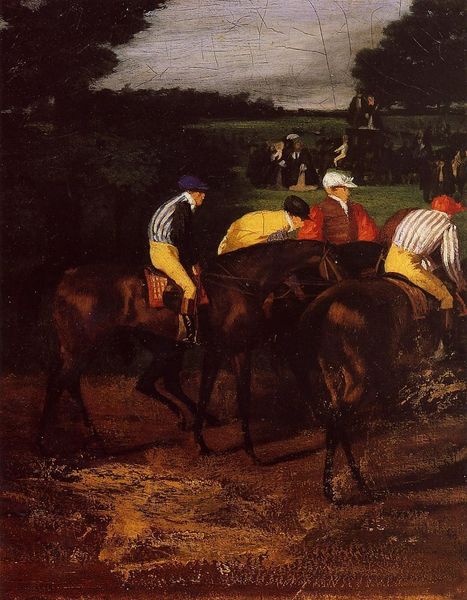
plein-air, oil-paint
#
impressionism
#
plein-air
#
oil-paint
#
landscape
#
oil painting
#
horse
#
cityscape
#
genre-painting
Copyright: Public domain
Curator: I'm struck by how this oil painting, “At the Races,” painted in 1877 by Edgar Degas, captures such a specific atmosphere, like a fleeting moment frozen in time. It feels quite contemporary despite its age. Editor: Immediately, I’m drawn to the colors—the muted greens and browns juxtaposed with the jockeys’ vibrant silks. There's a sense of contained energy about to burst. What might the cultural significance of the races have been in 1870s France? Curator: Well, horse racing in the late 19th century was more than just a sport; it was a spectacle, a social theater. The track served as a meeting ground for various classes, albeit with clear, unspoken hierarchies, mirroring broader societal structures and providing opportunities to negotiate identity through fashion, patronage, and social interactions. Editor: It is interesting you mentioned hierarchies, the horses are presented, as a potent symbol of both status and power. We've been conditioned, of course, to view equine figures this way from antiquity, but consider the costuming too, especially the hats: a display of both personal identity and societal allegiance. Is it too reductive to view the owners' enclosure here as akin to a stage? Curator: Not at all. It speaks directly to Foucault’s ideas around the panoptic gaze—who is watching whom, and how that dynamic influences behavior and representation. Also, there is the inherent link between equestrian sports, the aristocracy, and the perpetuation of specific ideologies regarding class and gender. Editor: Yes! I see a convergence of signifiers--the animals themselves and all these characters around them function together. They bring forth collective values about wealth and distinction. It almost feels like these figures might disappear into a grand statement if it weren’t for that lovely contrast of hues that help each subject remain unique. Curator: Degas doesn't give us grand pronouncements or idealized portraits. Instead, we are offered this fragmented perspective—almost a snapshot—of the nuances within these social rituals and a lens through which we can examine some unspoken societal conditions of the era. Editor: Thinking about the work now, I see both how appearances create social dynamics and how symbolic forces of art define culture in enduring ways.
Comments
No comments
Be the first to comment and join the conversation on the ultimate creative platform.

